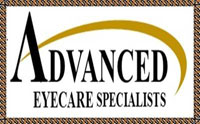
As families prepare for the upcoming school year, July is the perfect time to focus on the importance of children's eye health. Vision problems in children can significantly impact their learning and development.
Early detection and intervention are key to addressing these issues effectively. Here, we discuss some common vision problems in children and how to address them.
Common Vision Problems in Children
Nearsightedness (Myopia)
People with myopia experience blurry vision when looking at distant objects but have clear vision for close objects. It's one of the most common vision problems in children, and a comprehensive eye exam can diagnose it.
Prescription glasses or contact lenses can correct myopia. In some cases, orthokeratology (ortho-k) or specialized contact lenses worn overnight can temporarily correct myopia. Regular eye exams are essential to monitor and manage myopia progression.
Farsightedness (Hyperopia)
Hyperopia is the opposite of myopia. Close objects are blurry, and distant objects are clear. Mild hyperopia is common in young children and may not require treatment. Significant hyperopia can affect reading and other close-up tasks.
Prescription glasses or contact lenses can correct hyperopia, allowing your child to see clearly at all distances. Early detection through regular eye exams is crucial.
Astigmatism
Astigmatism is a condition where there is an irregularly shaped cornea, causing blurred vision at all distances. It often occurs alongside myopia or hyperopia.
Glasses or contact lenses can correct astigmatism. In some cases, refractive surgery may be an option once the child is older and their eyes have stopped growing.
Amblyopia (Lazy Eye)
Amblyopia occurs when one eye is weaker than the other, leading to poor vision in the affected eye. It usually develops in early childhood and can result from strabismus (crossed eyes) or significant refractive errors.
Treatment options include corrective glasses, patching the stronger eye to encourage the weaker eye to work harder, and vision therapy. Early intervention is essential to improve vision in the affected eye.
Strabismus (Crossed Eyes)
Strabismus is a misalignment of the eyes, where one eye may turn inward, outward, upward, or downward. It can affect depth perception and lead to amblyopia if not treated.
Treatment options include glasses, vision therapy, and, in some cases, surgery to align the eyes. Regular eye exams can detect strabismus early, improving the chances of successful treatment.
Convergence Insufficiency
Convergence insufficiency is when the eyes struggle to work together when focusing on close objects. This can cause double vision or eye strain.
Vision therapy exercises can help strengthen the eye muscles and improve coordination. Optometrists may suggest prescription glasses with prism lenses.
Addressing Vision Problems: The Role of Comprehensive Eye Exams
Regular comprehensive eye exams are crucial for detecting and addressing vision problems early. Unlike basic vision screenings, comprehensive exams can identify a wide range of issues. This ensures they diagnose any vision problems promptly.
The American Optometric Association recommends that children have their first eye exam at six months. Follow this with exams at age three, before starting school, and annually after that.
Correct Vision Problems With Advanced Eyecare Specialists
Addressing common vision problems in children is essential for their academic success and overall development. You can help your child achieve their full potential by ensuring regular eye exams and prompt treatment.
If you notice any signs of vision problems in your child, don't hesitate to request an eye exam at our practice in Swiftwater. Our experienced team is here to provide comprehensive care and support for your child's vision health.
